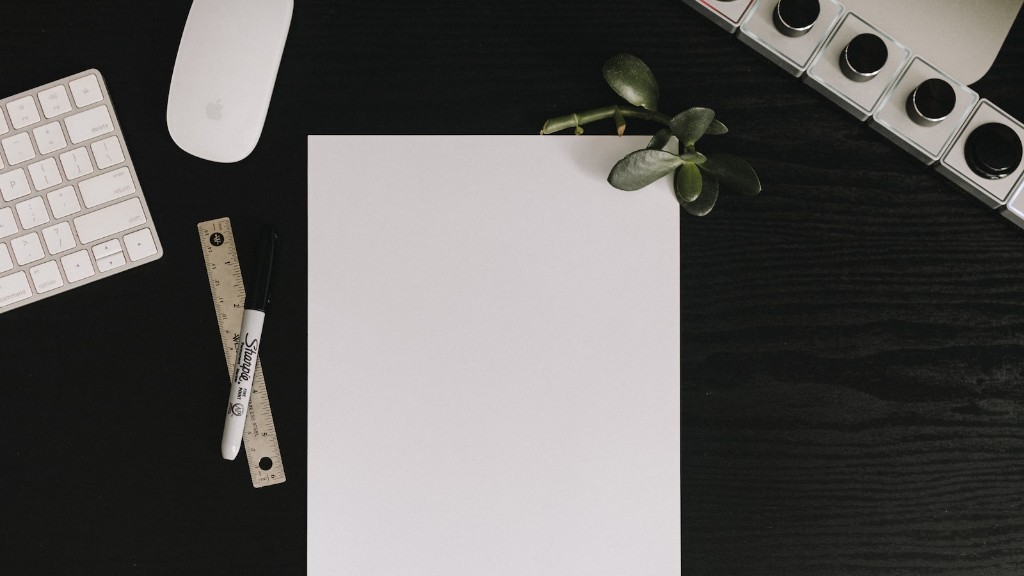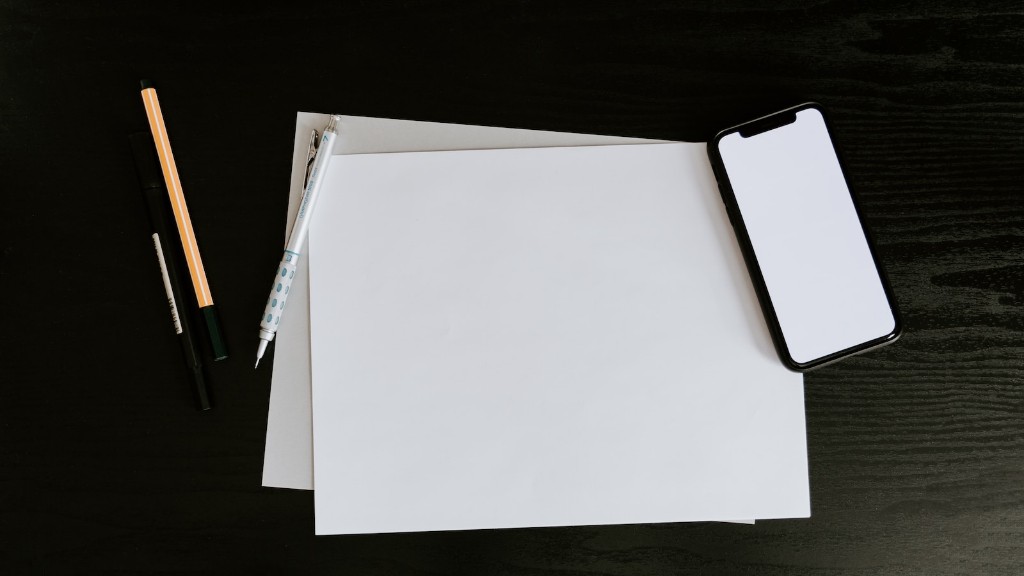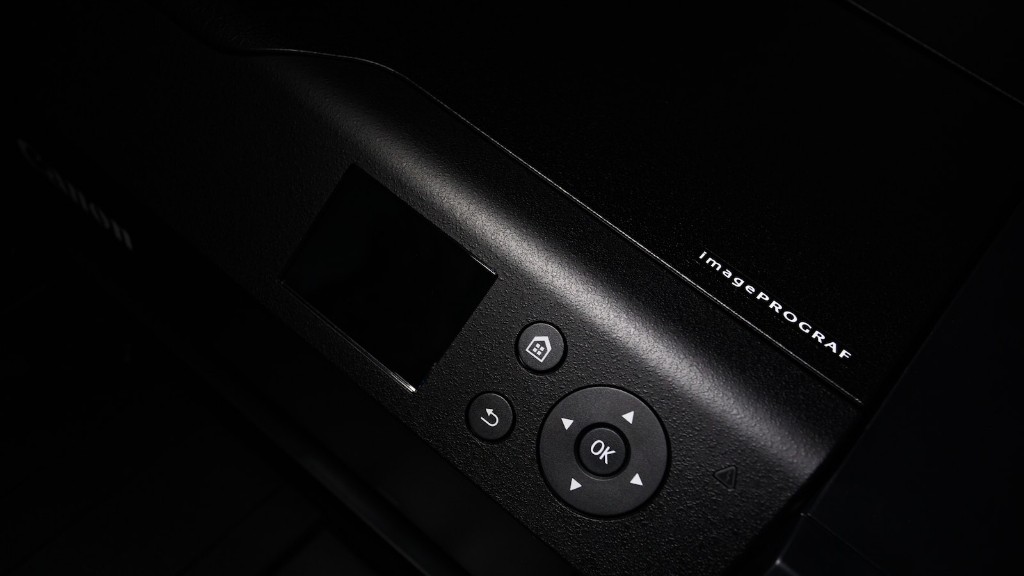Preparing For Custom Paper Sizes
Adding a custom paper size to your printer can seem daunting, but it’s a simple process that anyone can take with the right precautions. Whether you’re an average user who just needs to print out a few documents or a professional who prints out large documents every day, preparing the printer is the first step to a successful custom paper size print job.
Before you begin making changes, it’s important to back up current printer settings in case you need to reset the printer if something goes wrong. Carefully read through the printer manual for a step-by-step guide on how to back up your settings. Don’t forget to also check the printer’s website for updates on software or firmware if you’ve downloaded any recently.
Also, make sure the printer is fully loaded with the necessary media for the job. Check that paper trays are full and match up with the right size. If you need to print on both sides of the paper, you’ll also need to check that the printer is double-sided. And even if you just need to print a few documents, it’s always helpful to have extra paper on hand in case of an emergency.
Installing The Printer Software
Once you have the printer all set up, installing the print server software is the next step. This software ensures that the printer will print correctly without any errors. Check for a list of compatible software for your printer on the manufacturer’s website. Make sure to download the right version for your operating system, as some versions are not compatible with certain machines.
If you’re having difficulty finding the right software, talk to your printer provider or a support staff. A good tech support team should be able to provide the right software that matches your printer.
Adding The Custom Paper Size
Now that your printer is all set up, you can begin adding a custom paper size. Adding a custom paper size gives you more flexibility when it comes to printing documents, making it easier to print out larger or smaller documents without compromising the quality of the print job.
First, start by choosing the correct printer driver. Then, select the correct paper size option in the “Paper Size” tab. Now you can manually enter your custom paper size, or select a preset one. The exact steps vary depending on the printer and the software you’re using, so consult the manufacturer’s instructions or a support technician before adding the paper size.
Printing The Custom Paper Size
Once you’ve added the custom paper size to the printer, you can begin printing. Most printers have a preset option for printing documents according to their size, so select this setting for a hassle free print job.
If you’re using a standard application like Microsoft Office, you’ll need to manually select the paper size before printing. Change the properties of your document by clicking the drop-down menu containing the paper size settings. Then select your custom paper size when the list appears.
Adjusting The Print Settings
When printing out documents with a custom paper size, there are certain adjustments you’ll need to make. Set the “Page Orientation” setting to “Landscape” or “Portrait” depending on the document size. You can also adjust the margins of your document to suit your needs.
If you’re having any trouble, try switching over to “Advanced Settings”. This setting allows you to make more specific changes to the printer settings depending on the paper size and document type you’re trying to print.
Maintaining Your Printer’s Performance
Adding a custom paper size to your printer is just the first step to ensuring smooth printing. To make sure your printer keeps up with your workload, you’ll need to periodically check the printer parts and software for errors.
Check the Ink Supply level as well as any needed updates. A faulty part can cause the printer to slowly malfunction, resulting in disappointment and lost time. Also, make sure to clear out the printer memory often so the printer doesn’t slow down or experience any errors.
Safety Measures When Printing
Finally, to avoid any potential damage to your printer, it’s important to take the proper safety measures when printing. Make sure to place the printers away from dust and liquid, and use some kind of cover when not in use.
When printing documents with a custom paper size, make it a habit to check the printer tray for any possible obstructions in the path. A jammed printer can cause permanent damages to the internal components and potentially void warranties if it’s not taken care of quickly. Always turn off your printer before making changes and make sure it’s unplugged if you’re planning to move it.
Cleaning The Printer
Adding a custom paper size to your printer is a great way to expand the formatting capabilities of your documents. However, it’s important to take time and ensure that the printer is properly taken care of. Keep the printer free of dust and debris and clean the inside once in a while.
Gently cleaning the inside of the printer with a soft cloth is best way to keep the printer looking spotless and in tip-top shape. If you’re experienced with hardware, you can open the printer and safely clean the dust from the inside.
Developing Safety Guidelines
Before you start adding custom paper sizes to your printer, make sure to develop a comprehensive safety guideline for the entire process. This set of guidelines should be shared with everyone in your organization to ensure that the printer remains in good condition and everyone knows what to do in an emergency.
It’s also important to designate a person to look after the printer and make sure that the safety procedures are being followed properly. That way, you can rest assured that the printer is getting the proper attention and everyone is aware of the importance of safety measures.
Checking For Quality Prints
Finally, a successful printing task with a custom paper size will depend on the quality of your prints, so make sure to check for any errors or discrepancies in the printouts. Whether it’s a photo or a simple document, make sure to check for any blurring, fading, smudging, or discoloration in the printed pages.
If your prints are not coming out to your desired quality, try tweaking the paper settings so the printer can use the right kind of paper and the right ink. If the problem persists, it’s best to seek professional help or contact the company to get the printer checked for repairs or parts replacements.


